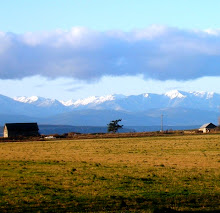At the end of one of the rows stands a stack of boxes painted white. Bees fly (somewhat slowly on a cool day like today)in and out of these hives. They share an important relationship with the cabbage plants. The bees fly through the field of flowers and get nectar which they use to make honey while pollinating the cabbage plants, thus allowing them to grow their valuable seeds.
When I travel to Germany and eat sauerkraut, I will remember the bright yellow field at Ebey's Landing National Historical Reserve and consider how plants, though seemingly immobile, can connect places and people over thousands of miles.


Note: No cabbage was damaged in the taking of these photographs.
Photos by John Chao and Steve Olson
Post by Sierra Young



No comments:
Post a Comment